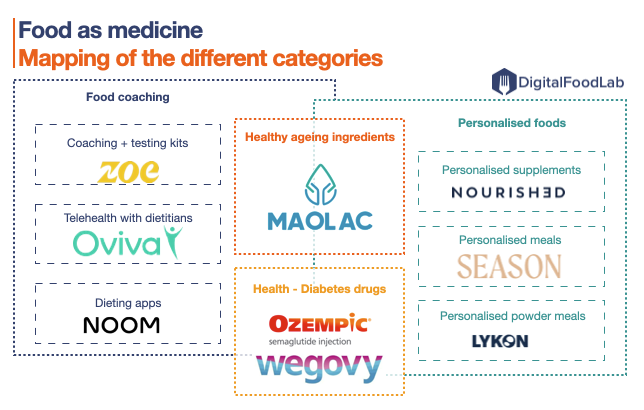Beyond climate change, the most pressing challenge is the evolution of the link between health and food. That’s something that major food companies have seen. For example, Nestlé announced that it was aiming to increase the sales of healthy foods by 50% by 2030 (that’s more than 20 billion francs) by either renovating existing products, offering more plant-based alternatives, switching its marketing efforts to healthier products, and using new technologies.
Why are we now observing such a trend towards healthier products? I see at least four reasons:
- inflation increases the need for brands to create higher-margin products, which is almost always the case for healthy alternatives;
- the growing concern created by the rise of obesity and diabetes all over the world;
- population change, and notably ageing in developed economies: you need to convince your consumers that they are ageing well while eating your products;
- the current enthusiasm for diabetes drugs used for weight loss (more on that below).
This “food as medicine” innovation ecosystem is quite fascinating. As its name suggests, it is the confrontation of two distinct ecosystems: health and food. Below is a mapping of some of the main categories.

As you can see on the mapping, all categories are more or less intertwined. It’s quite typical of a fairly early-stage ecosystem where the distinction between the players (basically “what the supply chain will look like”) is unclear. However, we can distinguish four main types of solutions :
📱 Food coaching: an ecosystem of players in constant reinvention, from dieting apps (with the only unicorn of this space, Noom) to testing kits (microbiome, DNA, glucose) to telehealth services such as Oviva.
🥗 Personalised foods: for years, we have seen startups promising personalised foods or supplements based on your genome or microbiome pop up, only to shut down a few months later. Now, a more solid generation of players has been established. It only represents a tiny market, but it demonstrates what food as medicine could be.

💊 Medicine, such as food or drugs for diabetes, is used for weight loss. If you have not heard about Ozempic and Wegovy, you probably lived in a cave for the past year. These two drugs are here to help with diabetes, but many people are starting to use them to manage their weight. They are super costly and ultimately reserved for the most affluent, but they show the potential for products that help consumers achieve their health goals. Just consider this: Novo Nordisk, the Danish maker of the two drugs, has seen its valuation jump and overtaken LVMH’s (Europe’s most valuable company) during the summer. It is easy from here to see that many other drug companies will venture into food.
⚙️ Healthy ageing ingredients: in the broader sustainable protein ecosystem, a sub-category of innovators (startups, researchers, large companies) are now developing ingredients that positively impact our health, notably as we age. This can be as straightforward as ingredients derived from breastmilk, which provide nutrients we metabolise less as we age. It also includes ingredients that will lessen the long-term damage of processed foods on our health.
The current efforts are far from enough: a recent study shows that the 11 largest food companies in the US have not yet made sufficient progress to make their products healthier. One key aspect of the report is how much more effort has to be put into making healthier alternatives affordable to low-income consumers.
As I said above, the mapping is about the types of solutions. What I meant is that it may be yet unclear what their business model and, more precisely, who the client will be is not yet specific. For example, more and more grocery retailers are offering the advice of dieticians (through consultations, in-store advice, or AI-powered chatbots). Everything is yet to be invented here, notably how we will produce, distribute and promote these products.
This is a fast-evolving space which is full of opportunities and threats for established players. If you are an ingredient, CPG, or retailer in this space, let’s plan a call and discuss how you could leverage food as medicine as a key trend to your plan to be a part of the future of food!







